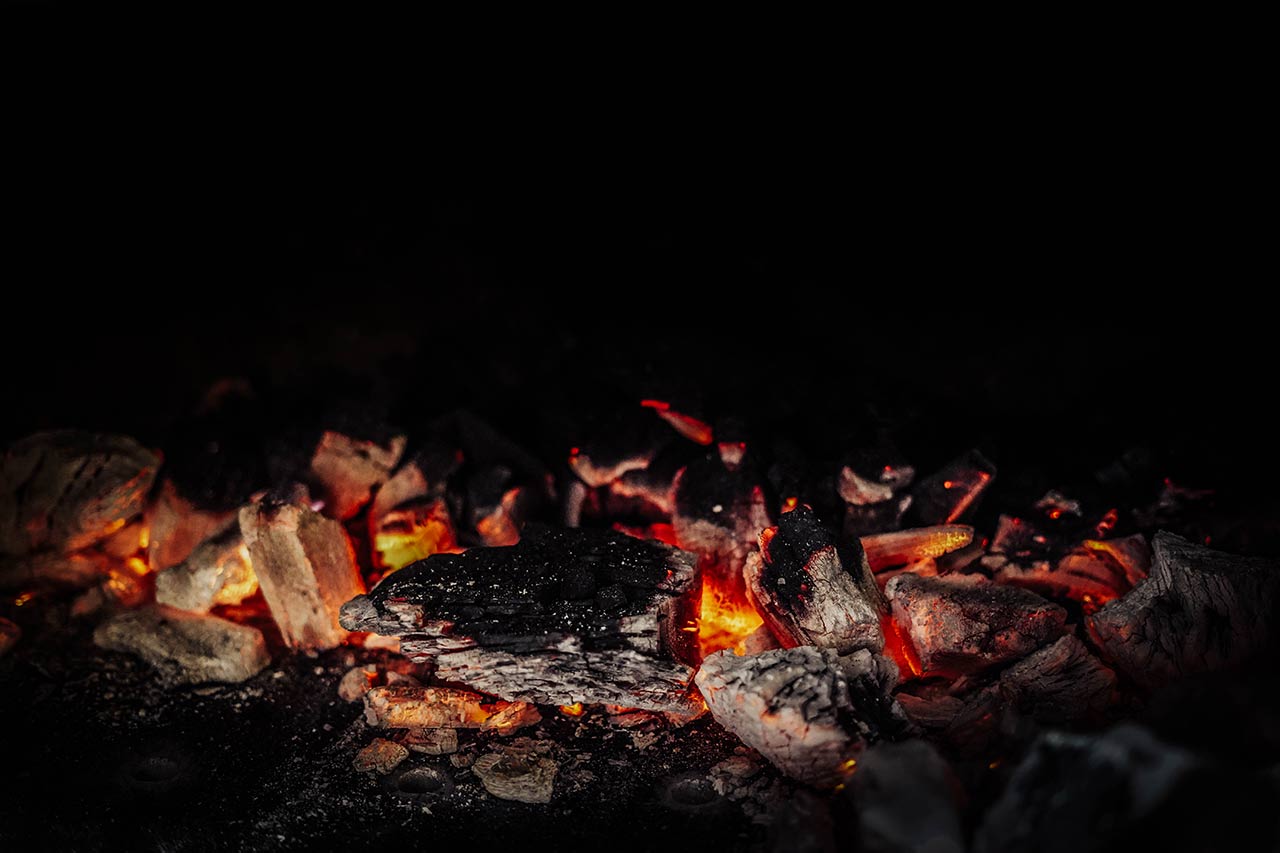How To Build A Smokeless Fire Pit: Expert Tips And Techniques
Building a smokeless fire pit can enhance your outdoor experiences by providing warmth and ambience, without the annoyance of smoke getting in your eyes or clothes. A smokeless fire pit is designed to reduce the amount of smoke produced, making your time around the fire more enjoyable, and a fire less obvious in a survival situation.
While no fire pit can be completely smoke-free, these designs come close, and offer a more pleasant (and clandestine) experience overall.
Choosing the Ideal Location
Finding the perfect spot for your smokeless fire pit is crucial, especially in a survival situation. You need a spot that can handle the demands of the setup and the fire, but can also conceal your location, providing warmth without drawing attention. Here’s what to think about while you’re scouting for a place:
1. Seek Level Ground: Look for a stable, level area that can handle the heat and weight of the fire pit. If you’re in the wilderness, grassy patches can be vulnerable to scorching, and may reveal your location due to damaged ground. Opt for a spot with a natural, non-flammable base, like gravel, sand, or bare dirt.
2. Prioritize Safety: Even in, or maybe especially in, survival situations, safety remains paramount. Ensure the fire pit is positioned well away from dry leaves, twigs, or tall grass that could easily ignite. Also be aware of surrounding vegetation. Trees or bushes could catch fire from flying embers.
3. Maintain Stealth: Remember, a smokeless fire’s primary advantage in survival scenarios is its discretion. Keep it away from pathways, water sources, or clearings where others might pass by. The less visible and noticeable it is from a distance, the better.
4. Accessibility: While stealth is vital, you also need to ensure that you have easy access to the fire for cooking, boiling water, or to signal if necessary.
5. Plan for Quick Extinguishing: Always have a plan to put out your fire quickly. This could mean being close to a water source or having a mound of dirt or sand at hand. In situations where you may need to leave in a hurry, having the means to extinguish the fire rapidly is crucial.
6. Think Tactical Comfort: While your primary focus is survival, considering some level of comfort isn’t a bad idea. If you’re in a location for an extended period, the fire pit should be placed where you can maximize warmth, especially during colder nights. Think about natural windbreakers like rock formations or dense thickets.
Remember, the key to survival is adaptability. While these guidelines provide a starting point, always assess your specific environment and situation to determine the best course of action.
Materials and Tools Needed
The materials and tools you’ll need to build your smokeless fire pit really depends on where you are and what’s around you. Here are some quick material lists for building different types of smokeless fire pits depending on the materials close at hand.
For a Brick Fire Pit
To build a smokeless brick fire pit, you’ll need the following materials and tools:
- Bricks: Choose heat-resistant bricks to ensure safety and durability.
- Mortar: This will be used to hold the bricks together.
- Steel stock tank ring or metal fire pit insert: This forms the inner core of the pit and helps reduce smoke production.
- Tape measure: For accurate measurements of the fire pit dimensions.
- Hammer and chisel: To shape and adjust bricks as needed.
- Trowel: To apply mortar between bricks.
For a Stone Fire Pit
For a smokeless stone fire pit, gather these materials and tools:
- Stones: Select heat-resistant, non-porous stones to prevent cracking and breaking.
- Gravel or sand: This will be used as a base layer to promote drainage and stability.
- Masonry adhesive: To bond the stones together.
- Steel stock tank ring or metal fire pit insert: As with the brick fire pit, this forms the inner core and helps reduce smoke production.
- Tape measure: To measure the fire pit dimensions accurately.
- Angle grinder: To cut and shape stones as needed.
For a Steel Fire Pit
When building a smokeless steel fire pit, you’ll need:
- Stainless steel or galvanized steel drum: This will form the main structure of the fire pit.
- Steel stock tank ring or metal fire pit insert: Like with the other types of fire pits, this helps reduce smoke production.
- Drill and drill bits: To make vent holes in the steel drum for proper air circulation.
- Jigsaw: To cut out handles, if desired.
- Tape measure: For accurate measurements.
- Metal file: To smooth any sharp edges on the steel drum.
Preparation of Ground and Installation of Base
Before you get started on your smokeless fire pit, you’ll need to properly prepare the ground and install a solid base. Here are the steps to create a good base for your smokeless pit:
- Choose a location: Pick a suitable spot a safe distance away from any structures, trees, or other flammable materials. Keep at least 10 feet away from anything that can burn to avoid fire hazards.
- Mark the area: Once you’ve found the perfect spot, use a measuring tape to mark out a circle with a diameter of about 3 to 4 feet. You can use a stake or can of spray paint to make it visible. This will be the area for your smokeless fire pit.
- Dig the hole: With a shovel, dig a hole that is around 6 to 8 inches deep to create space for the base of your fire pit. Make sure the bottom is level as you do this.
- Add a layer of gravel: Pour a 2 to 3-inch layer of gravel at the bottom of the hole. This will help with drainage and provide a solid base for your fire pit. Use a rake or your hands to spread it evenly. Stones or rocks will serve the same function in the wild.
- Place pavers or a concrete slab: If you’ve chosen to use pavers or a concrete slab for your base, now’s the time to place them. Arrange the pavers in a circle or square shape on the gravel, leaving enough room in the center for your fire pit.
- Fill the gaps with sand: When using pavers, make sure to fill in the gaps between them with sand. This will help keep everything in place and prevent any unwanted movement.
Once you’ve completed these steps, your ground should be prepared, and the base for your smokeless fire pit installed. Now you can move on to constructing the actual fire pit.
Building the Fire Pit
Once you have the base for your smokeless fire pit, it’s time to build the actual fire pit itself. Here are the most basic steps for building a smokeless setup from start to finish:
- Select your materials: Decide whether you’ll utilize bricks, stones, or a blend for your pit’s outer structure. In wilderness conditions, smooth river rocks are ideal. Make certain you’ve gathered enough to establish a solid circular barrier.
- Begin construction: Commence by organizing your chosen materials in the marked circle. A consistent diameter ensures optimal performance. If certain rocks are overly bulky, try breaking them or finding smaller ones for a snug fit.
- Incorporate a steel or metal ring (optional): If you have access to a steel ring or similar object, position it inside the stone circle. It acts as an inner shield, further reducing smoke generation.
- Build with ventilation in mind: As you stack the rocks or bricks, be sure to leave small openings for air circulation. This promotes efficient burning and minimizes smoke output.
- Finalize the height: Aim for a height between 12 and 18 inches. Ensure the structure remains stable and safe throughout.
- Integrate a grill (optional): If available, a grill can be placed atop the fire pit. This transforms your fire pit into a functional cooking area.
Adding Ventilation Holes
When building a smokeless fire pit, the most essential step is adding ventilation holes in the right places. These holes ensure proper airflow which helps maintain the fire’s heat and efficiency. By providing enough oxygen for the fire, you reduce the amount of smoke produced.
Here are some simple steps for adding ventilation holes to your fire pit, based on the types of tools you have on hand:
In a More Civilized Environment
If you have a drill on hand, it can really help in building your smokeless fire pit. Here’s how to easily add ventilation holes with a drill.
- Mark the locations for the air vent holes near the base of the fire pit. You’ll need two-inch air holes at least every 36 inches around the base. The number of holes needed may increase with the size of the pit.
- Drill the marked spots. These vent holes allow cold air to be drawn into the pit, feeding the fire with oxygen. As the cold air enters the pit, it is heated by the fire and rises through a process called convection. This movement of air prevents excessive smoke buildup by continually supplying fresh oxygen to your fire.
- Keep the air holes clear of ash and debris. This is important for maintaining proper airflow, so your smokeless fire pit can function optimally. Avoid using plastic pipes or PVC for vent holes as they can easily melt and release toxic fumes.
In a Wilderness Environment
If you’re in the wilderness and need create a smokeless fire pit on the fly, you may not have a drill on hand. Here’s how to use what you do have around you in your smokeless pit construction:
- Avoid wind. Choose a spot with some protection from wind when possible, as wind can carry smoke and cause uncontrolled flares.
- Dig trenches for airflow. Using your hands or a makeshift tool, create small trenches or channels leading into the base of the fire pit. Aim for two or more trenches, each approximately a finger’s width wide and deep, evenly spaced around the perimeter of the pit. These channels will guide fresh air into the heart of the fire.
- Monitor airflow. As the fire burns, observe the flames. If the fire is producing more smoke than desired, you might need to adjust the trenches for better airflow or add more channels.
- Keep the air holes free of ash and debris. Regularly clear out any obstructions to ensure continuous airflow.
The Benefits of a Smokeless Fire Pit
Smokeless fire pits are more than just a modern luxury. In both everyday life and survival scenarios, they offer a blend of warmth, ambiance, and stealth that traditional fires don’t.
Constructing a smokeless fire pit requires some foresight and effort, but the rewards are well worth it. Whether you’re using advanced tools in a suburban backyard or leveraging natural resources in the wilderness, the principles of efficient combustion and airflow remain the same – feed your fire oxygen and it will keep the smoke to a minimum.




